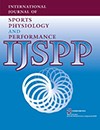21 May Environmental and psychophysical heat stress in adolescent tennis athletes
 Misailidi M, Mantzios K, Papakonstantinou C, Ioannou LG, Flouris AD. Environmental and Psychophysical Heat Stress in Adolescent Tennis Athletes. Int J Sports Physiol Perform. 2021 May 21;16(12):1895-1900. doi: 10.1123/ijspp.2020-0820. PMID: 34021093.
Misailidi M, Mantzios K, Papakonstantinou C, Ioannou LG, Flouris AD. Environmental and Psychophysical Heat Stress in Adolescent Tennis Athletes. Int J Sports Physiol Perform. 2021 May 21;16(12):1895-1900. doi: 10.1123/ijspp.2020-0820. PMID: 34021093.
Abstract:
Purpose: We investigated the environmental conditions in which all outdoor International Tennis Federation (ITF) junior tournaments (athlete ages: <18 y) were held during 2010-2019. Thereafter, we performed a crossover trial (ClinicalTrials.gov: NCT04197375) assessing the efficacy of head-neck precooling for mitigating the heat-induced psychophysical and performance impacts on junior athletes during tennis match play.
Methods: ITF junior tournament information was collected. We identified meteorological data from nearby (13.6 [20.3] km) weather stations for 3056 (76%) tournaments. Results: Overall, 30.1% of tournaments were held in hot (25°C-30°C wet-bulb globe temperature [WBGT]; 25.9%), very hot (30°C-35°C WBGT; 4.1%), or extremely hot (>35°C WBGT; 0.1%) conditions.
Thereafter, 8 acclimatized male junior tennis athletes (age = 16.0 [0.9] y; height = 1.82 [0.04] m; weight = 71.3 [11.1] kg) were evaluated during 2 matches: one with head-neck precooling (27.7°C [2.2°C] WBGT) and one without (27.9°C [1.8°C] WBGT). Head-neck precooling reduced athletes’ core temperature from 36.9°C (0.2°C) to 36.4°C (0.2°C) (P = .001; d = 2.4), an effect reduced by warm-up. Head-neck precooling reduced skin temperature (by 0.3°C [1.3°C]) for the majority of the match and led to improved (P < .05) perceived exertion (by 13%), thermal comfort (by 14%), and thermal sensation (by 15%). Muscle temperature, heart rate, body weight, and urine specific gravity remained unaffected (P ≥ .05; d < 0.2). Small or moderate improvements were observed in most performance parameters assessed (d = 0.20-0.79).
Conclusions: Thirty percent of the last decade’s ITF junior tournaments were held in hot, very hot, or extremely hot conditions (25°C-36°C WBGT). In such conditions, head-neck precooling may somewhat lessen the physiological and perceptual heat strain and lead to small to moderate improvements in the match-play performance of adolescent athletes.
Full Text Link:
https://pubmed.ncbi.nlm.nih.gov/34021093/
![]()


